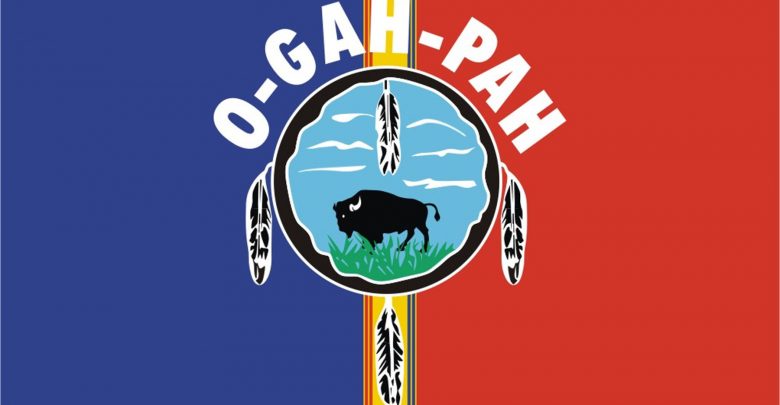Quapaw Nation reaches massive settlement with United States

After years of litigation, the Quapaw Nation has reached a multi-million dollar settlement with the United States. Read the full press release below:
With the public filing of settlement documents last Friday in the United State Court of Federal Claims, the Quapaw Nation neared the end of its unprecedented effort to obtain a measure of justice for serious federal mismanagement of its reservation lands, accounts, and other Indian trust assets.
Under a settlement with the United States, the Nation and its members are due to receive almost $200 million through a combination of immediate payments and appropriations to be requested from Congress pursuant to special legislation adopted in December 2012 known as a “congressional reference.”
“For my tribe I am glad we are nearing the end,” said John L. Berrey, who has served as Chairman of the Nation’s Business Committee since the litigation began. “But I think a lot as well about our ancestors who suffered this mistreatment and who deserved this restitution, and also about the many elders who supported this cause and who we have lost over all the years this has taken.”
The tribe filed an accounting case on February 14, 2002, to begin what it hoped would be a demonstration that Indian tribes could resolve claims against the United States through alternative dispute resolution. In 2004, the tribe reached a settlement of its accounting case that provided for a one-of-a-kind project under which the Nation was given access to federal records to conduct its own analysis of federal management of Quapaw assets.
The Nation’s efforts to try to work with the federal government to resolve disputes and claims outside of litigation was supported at the time by members of Congress and by officials at the U.S. Department of the Interior. However, when the Quapaw Trust Analysis project was completed in the summer of 2010, the U.S. Department of Justice and the Department of the Interior told the Nation they were no longer interested in attempting a mediation.
“The Justice Department told us, in so many words, to go file a suit,” Berrey said. “I think that was very shortsighted, because I still believe we had in mind a path for resolving issues between tribes and the federal government that is more constructive than engaging in expensive and costly litigation.”
Faced with no alternative, the Nation assisted its members who were interested in opting out of the Cobell settlement sponsored by Congress and the Department of the Interior. Had the tribe not done so, the individuals who accepted the Cobell settlement would have settled their claims for breach-of-trust for what the federal government offered. The Quapaw Nation is the only Indian tribe that took such extensive measures to help its members obtain a remedy for federal mismanagement of Indian assets.
After filing breach-of-trust suits for both individuals and the Nation in the United States Court of Federal Claims, Berrey personally walked the halls of Congress to obtain the congressional reference. This reference provides a remedy for individuals whose claims have been extinguished by the statute of limitations. The U.S. House of Representatives adopted a reference for the Nation and its members in December 2012—which was considered an achievement for Berrey, because such legislation is exceedingly rare.
“Most Quapaw families had lost their Indian lands by the 1920s—often by fraud or theft—and so they no longer had legal claims,” Berrey said. “Our leadership wanted to try to do everything we could to obtain a remedy for all of our people for what has been done to our tribe.”
The Quapaw litigation was complicated, contentious, expensive—and seemingly never-ending. “Our leadership and our members showed amazing perseverence throughout this litigation,” Berrey said. “I’m not certain there are many governments that have the determination and staying power to sustain an effort such as this one.”
The Quapaw Reservation once was fertile agricultural land known at one point as the “hay capital” of the Nation. However, a rich lead and zinc field on the reservation began to be exploited in the 1890s—ultimately resulting in extensive environmental devastation. The trial judge, Thomas C. Wheeler, who conducted a site visit before the original trial date, noted in a recent order: “These consolidated cases arise out of the Government’s alleged mismanagement of lands held in trust for members of the Quapaw Nation (O-Gah-Pah). There is no question that the Plaintiffs’ land, which is now an EPA superfund site, was decimated by decades of mining operations.”
A settlement in principle was reached in the Quapaw cases on the night before trial was to begin in October 2016. But that did not achieve the Nation’s hoped-for resolution. The settlement discussions dragged on for almost three years, and as time passed more complications arose. In the late spring, Judge Wheeler returned the case to the trial docket, and advised the parties that the case would be tried—without further delay—beginning on September 30. A new settlement in principle was reached just three days before the trial was scheduled to begin. This time, however, the settlement was ultimately finished and approved.
Under the settlement, the Nation and its members who have claims within the statute of limitations are to receive collectively $59 million. Additionally, the federal government has stipulated that the damages to be referred to Congress under the congressional reference are $137.5 million. All living tribal members are to be included in the appropriation to be made under the congressional reference.
“This settlement represents symbolic justice for the wrongs done to the Quapaw people through the federal government’s mismanagement of our lands and other assets,” Berrey said. “I hope the recognition by the federal government of these past injustices will help the members of our Nation living today close the books on the past.”



